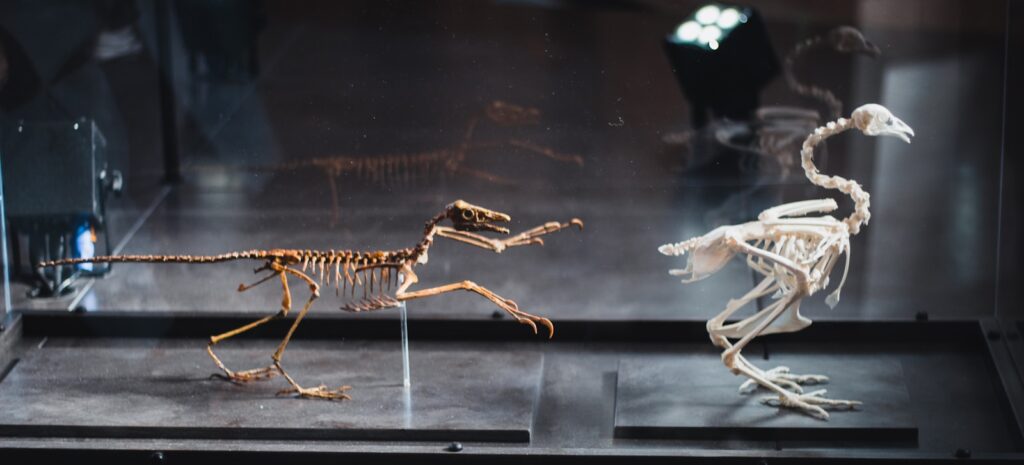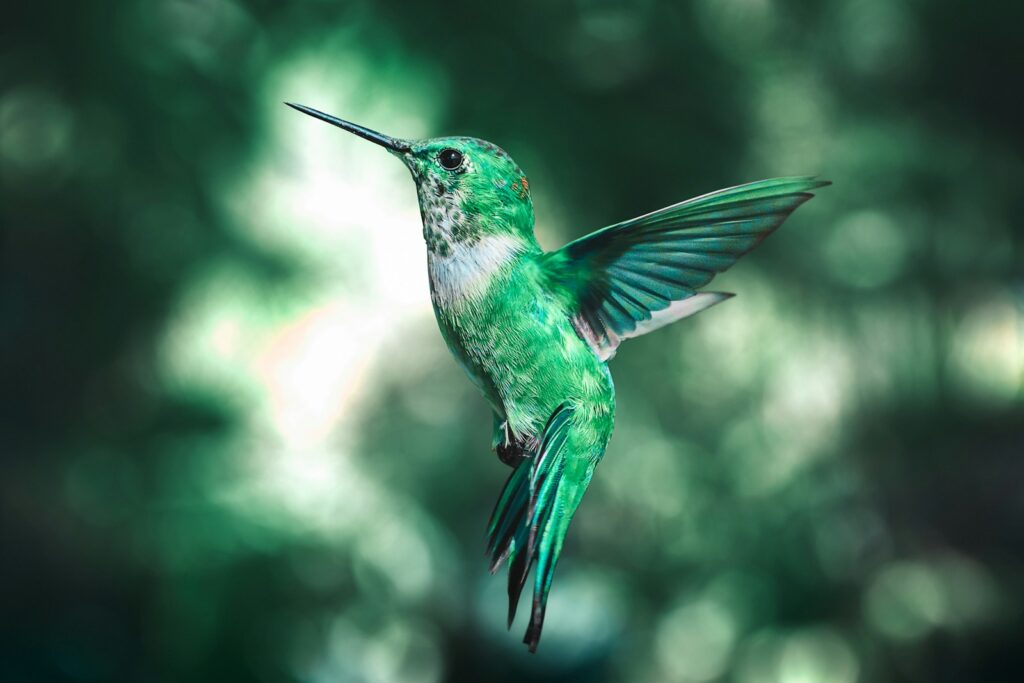The melodious trill of a robin at dawn or the complex song of a nightingale may seem worlds away from the fearsome roar of a Tyrannosaurus rex, yet these delicate creatures carry within them the genetic legacy of their prehistoric ancestors. Modern birds, particularly songbirds, represent the last living descendants of dinosaurs, specifically theropods—the group that included velociraptors and other bipedal predators. This evolutionary connection is far more than a distant relationship; it’s written into the very DNA of every sparrow and finch that visits your backyard. The remarkable story of how today’s songbirds still carry and express ancient dinosaur DNA offers a fascinating window into evolutionary processes and the unexpected ways that life adapts and continues across vast periods.
The Evolutionary Bridge: From Theropods to Songbirds

The transition from ground-dwelling theropod dinosaurs to airborne birds represents one of the most remarkable evolutionary journeys in Earth’s history. This transformation didn’t happen overnight but occurred gradually over millions of years during the Jurassic and Cretaceous periods. Fossil evidence, particularly from discoveries in China such as Archaeopteryx and more recently Microraptor, reveals creatures with both dinosaur and bird characteristics, showing feathered dinosaurs with progressively more bird-like features. Genetic studies confirm what fossils suggested: birds didn’t just evolve from dinosaurs; they are living dinosaurs that survived the mass extinction event 66 million years ago. The small, adaptable avian dinosaurs that would eventually give rise to modern birds managed to survive while their larger relatives perished, carrying forward the genetic code that had developed over millions of years of dinosaur evolution.
Genomic Evidence: The DNA Doesn’t Lie

Modern genomic analysis has provided irrefutable evidence of birds’ dinosaurian heritage through detailed DNA sequencing. When scientists compare the genomes of modern birds with the limited genetic material recovered from dinosaur fossils, they find remarkable similarities in key genetic regions. Though we cannot sequence complete dinosaur genomes due to DNA degradation over time, researchers have identified specific genetic elements in birds that were likely inherited directly from their dinosaur ancestors. Particularly revealing are the developmental genes that control growth, limb formation, and scale-to-feather transitions. These genetic markers demonstrate continuity across millions of years, despite the dramatic physical transformations that have occurred. The avian genome has been streamlined and modified compared to other vertebrates, yet it retains core elements that were present in the theropod dinosaurs that walked the Earth over 66 million years ago.
From Scales to Feathers: A Genetic Revolution

Perhaps the most visible manifestation of dinosaur DNA in modern birds is found in their feathers. Contrary to popular belief, feathers did not evolve for flight but first appeared in dinosaurs for insulation and display purposes. The genetic instructions for creating feathers are inherited directly from theropod dinosaurs, with recent research identifying the specific genetic switches that transform scale-producing skin into feather-producing follicles. These genes, including the beta-keratin gene family and regulatory elements like SHH and BMP, were present in dinosaurs before birds evolved. Microscopic examination of fossil imprints has revealed that many non-avian dinosaurs had primitive feather-like structures, confirming that the genetic machinery for feather development was well-established in the dinosaur lineage. Today’s songbirds express these ancient genes with modifications that have refined feathers for specialized functions like efficient flight, thermal regulation, and elaborate visual displays used in courtship.
Bone Structure and Development: Dinosaurian Architecture

The skeletal system of modern birds retains numerous hallmarks of their dinosaur ancestry, controlled by genes that have been conserved across evolutionary time. Birds possess hollow, pneumatized bones—a feature first developed in their theropod ancestors to reduce weight while maintaining strength. The genetic programs that control this distinctive bone development are directly inherited from dinosaurs. Modern songbirds also share with dinosaurs a unique respiratory system featuring air sacs that extend into these hollow bones, controlled by conserved genetic pathways. Even more telling is the development of the avian wrist and hand, which shows remarkable similarities to dinosaur forelimbs at the embryonic stage before differentiating into the specialized wing structure. These developmental patterns are governed by ancient genetic instructions that were present in dinosaurs and continue to direct the growth of every bird embryo today.
The Avian Respiratory System: A Dinosaur Innovation

One of the most sophisticated biological systems in modern birds—their unique respiratory apparatus—has its origins in dinosaur physiology and genetics. Unlike mammals, birds possess a unidirectional breathing system with air sacs that allow for constant oxygen flow, making their respiration extraordinarily efficient. Paleontological evidence suggests that this system began evolving in theropod dinosaurs, with skeletal features indicating the presence of similar respiratory structures. The genetic controls for developing this complex system remain active in modern songbirds, regulated by conserved developmental genes inherited from their dinosaur ancestors. This respiratory efficiency likely provided advantages to active predatory dinosaurs and later became crucial for the high-energy demands of powered flight in birds. The fact that all modern birds share this distinctive respiratory architecture points to its development before the evolution of the first true birds, placing its origins firmly in their dinosaurian predecessors.
Egg-Laying and Nesting Behaviors: Ancient Parental Care

The reproductive strategies of modern songbirds offer another window into their dinosaur heritage, with genetic programming that governs egg formation and nesting behaviors dating back to the Mesozoic Era. Like their dinosaur ancestors, birds lay amniotic eggs with specialized membranes and shells, a reproductive strategy controlled by ancient genetic pathways. Fossil discoveries have revealed that many theropod dinosaurs exhibited bird-like brooding behaviors, sitting on nests to incubate their eggs—a behavior encoded in genes that remain active in today’s songbirds. The very shape of bird eggs and the molecular composition of their shells follow patterns established in dinosaur lineages, guided by genetic instructions that have been passed down with modifications over millions of years. Even the instinctual nest-building behaviors observed in modern songbirds may have their origins in dinosaur genes, as fossils show that some dinosaur species constructed nests remarkably similar to those made by ground-nesting birds today.
Brain Development and Intelligence: Smart From the Start

The remarkable intelligence displayed by many songbird species has deep evolutionary roots in their dinosaur ancestors, preserved and enhanced through genetic continuity. Contrary to outdated notions of dinosaurs as dim-witted creatures, evidence now suggests many theropods possessed relatively large brains for their body size—a trait that became even more pronounced in the avian lineage. The genes controlling brain development in modern birds show clear evolutionary connections to those of dinosaurs, particularly in regions associated with sensory processing and spatial awareness. Neurological studies of living birds reveal brain structures that likely evolved in their dinosaur ancestors, especially the expanded cerebrum that enables complex behaviors and learning. The exceptional cognitive abilities of corvids (crows and ravens) and some songbirds—including tool use, problem-solving, and even rudimentary language skills—may represent the continued expression and refinement of neural capabilities that first emerged in their dinosaur ancestors, preserved in genes that have been inherited across the extinction boundary.
Metabolic Rates and Warm-Bloodedness: Dinosaur Energy Systems

The high-energy lifestyle of modern songbirds, characterized by remarkable metabolic efficiency and true endothermy (warm-bloodedness), has its genetic origins in their dinosaur ancestors. Growing evidence suggests that many theropod dinosaurs were partially or fully warm-blooded, with metabolic adaptations controlled by genes that continue to function in today’s birds. The genetic instructions for developing specialized respiratory structures, efficient hearts, and the unique insulating properties of feathers all contribute to birds’ high metabolic capabilities and were first encoded in dinosaur DNA. Microscopic studies of dinosaur bone tissue reveal growth patterns consistent with elevated metabolism, suggesting the genetic machinery for endothermy was already evolving in the dinosaurian ancestors of birds. Modern songbirds express these ancient metabolic genes with refinements that allow them to maintain precise body temperatures despite their small size, enabling the intense activity levels required for powered flight and complex territorial behaviors.
Dinosaur Coloration Genes Still at Work

The vibrant plumage of a cardinal or the iridescent sheen of a hummingbird’s feathers showcase ancient dinosaur genes still actively creating pigmentation in modern birds. Breakthrough research in the past decade has identified fossilized melanosomes—cellular structures containing pigment—in dinosaur feather impressions, allowing scientists to determine the actual colors of some dinosaur species. The genes controlling these pigment-producing cells remain essentially unchanged in modern birds, directing the development of similar structures during feather formation. Molecular studies have identified specific genes, such as those in the MC1R family, that regulate pigment production and patterning in modern birds and show evidence of ancient origins in the dinosaur lineage. The elaborate color patterns used by songbirds for camouflage, territorial displays, and mate attraction represent modifications and elaborations of genetic programs first developed in their dinosaur ancestors. Even the ability to produce structural colors through microscopic feather arrangements—creating the blues of bluebirds or the iridescence of starlings—utilizes genetic instructions with roots in dinosaur DNA.
Vocalization Capabilities: From Dinosaur Calls to Bird Songs

The melodious complexity of songbird vocalizations, while highly evolved, builds upon anatomical and genetic foundations established in their dinosaur ancestors. Recent fossil discoveries have identified specialized sound-producing structures in some dinosaur species, suggesting they were more vocal than previously thought. The syrinx—the unique voice box of birds that enables their complex songs—represents an evolutionary modification of structures present in dinosaurs, governed by genes inherited from these ancient ancestors. Developmental studies show that the genes controlling the formation of vocal anatomy in bird embryos have deep evolutionary histories, connecting them to their dinosaurian past. While the neural circuitry for complex song learning represents a more recent evolutionary innovation in true songbirds, the basic genetic capacity for sound production was already present in dinosaurs. Remarkably, the regions of the avian brain dedicated to vocal learning show structural similarities to brain regions used for other purposes in reptiles, suggesting ancient genes were repurposed for new functions as bird song evolved.
Behavioral Genetics: Dinosaur Instincts in Modern Birds

Many instinctual behaviors exhibited by modern songbirds have their origins in genetic programming that evolved in their dinosaur ancestors. Territorial behaviors, courtship displays, and certain hunting techniques seen in birds show remarkable parallels to behaviors inferred from dinosaur fossil evidence. The genetic basis for these behaviors—complex sets of interacting genes that influence neural development and hormone production—has been inherited and modified through millions of years of evolution. Fossil evidence of dinosaur nesting colonies and apparent social behaviors suggests that the genetic foundations for avian sociality were present before true birds evolved. Migratory behaviors, which rely on inherited genetic programs for timing and navigation, may also have roots in seasonal movements of dinosaur populations, though the genetic complexity of modern bird migration represents a significant evolutionary elaboration. Perhaps most compelling are the parental care behaviors seen in many songbirds, which parallel the parental investments observed in fossil evidence of dinosaur nesting sites, where adults protected and provisioned their young.
Immune System: Ancient Defenses Against Disease

The sophisticated immune system of modern birds carries genetic traces of defense mechanisms that first evolved in their dinosaur ancestors to combat ancient pathogens. Birds possess unique immunological features, including specialized antibody structures and inflammatory responses that differ from those of mammals but show evolutionary connections to reptilian systems. Genomic studies have identified immune-related genes in birds that appear to have ancient origins, likely present in the common ancestor they shared with other dinosaurs. These genetic defense systems have been continuously tested and refined through evolutionary time, facing countless pathogens across the 66 million years since the extinction event that eliminated non-avian dinosaurs. The remarkable efficiency of the avian immune response, which must operate at high body temperatures and support intense metabolic demand, represents the continued expression of genetic programs with deep dinosaurian roots. Even the specialized development of the bursa of Fabricius, a unique immune organ in birds where B cells mature, evolved from tissues present in their dinosaur ancestors, directed by genes that maintain their ancient functions while adapting to new challenges.
Future Research: Unraveling More Dinosaur Secrets in Bird DNA

The scientific exploration of dinosaur DNA preserved in modern birds represents an exciting frontier in evolutionary biology, with many discoveries still ahead. Advances in genomic technology are allowing researchers to identify previously unrecognized dinosaur genes in the avian genome and better understand how these ancient genetic programs have been modified over time. The emerging field of evolutionary developmental biology (evo-devo) is particularly promising, as it examines how changes in the expression of dinosaur genes create the distinctive features of modern birds. New techniques for analyzing ancient proteins preserved in some exceptionally well-preserved fossils may allow for more direct comparisons between dinosaur biomolecules and their modern avian counterparts. Comparative studies examining birds alongside crocodilians—the other living archosaur lineage related to dinosaurs—continue to provide context for identifying truly dinosaurian genetic traits. As our understanding of the avian genome grows more sophisticated, we gain not only insight into bird biology but also a clearer window into the genetic heritage of the magnificent dinosaurs that once ruled the Earth and live on today in the DNA of every singing sparrow and warbling wren.
Conclusion

The story of dinosaur DNA in modern songbirds represents one of the most remarkable continuities in the history of life on Earth. From the complex songs of nightingales to the aerodynamic perfection of swallow wings, the genetic legacy of dinosaurs remains visible and functional in birds all around us. This evolutionary connection reminds us that extinction is never complete as long as descendants carry forward the genetic innovations of their ancestors. The next time you hear a songbird’s melody or watch a hummingbird hover with impossible precision, remember you’re witnessing the expression of genetic instructions first written in the DNA of dinosaurs millions of years ago—ancient programming that continues to adapt and thrive in the remarkable diversity of modern birds.




